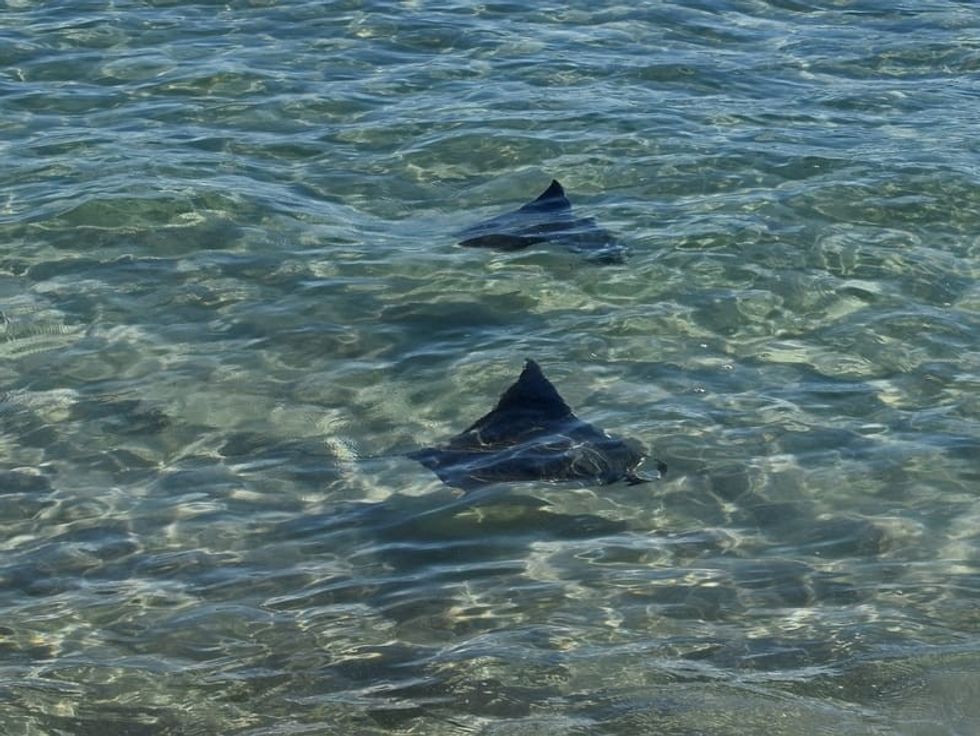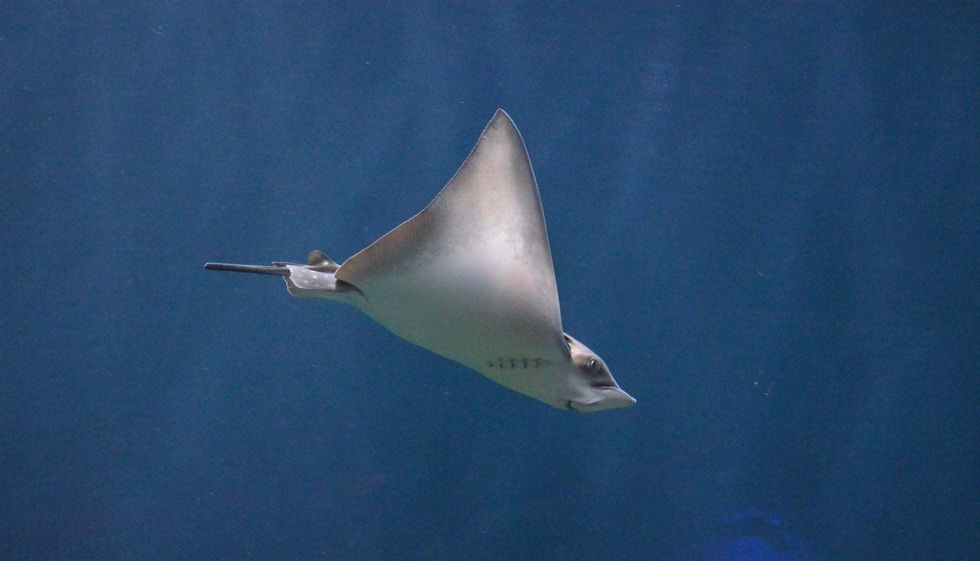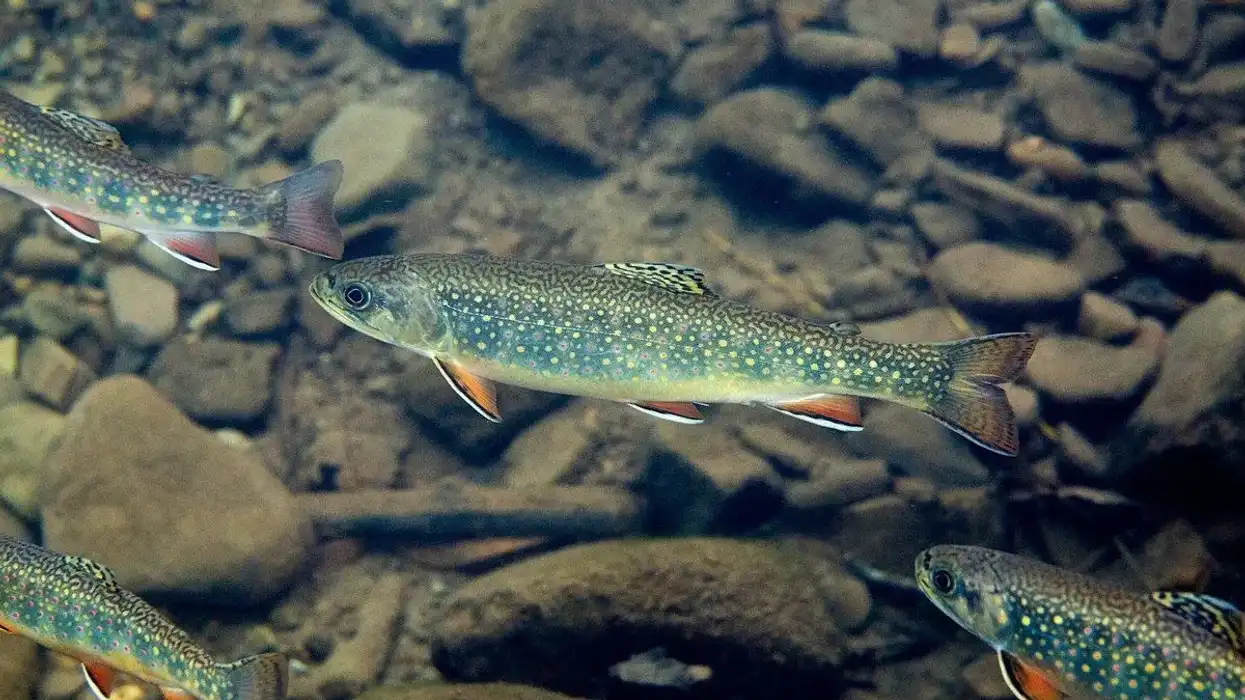Fun Short-tail Stingray Facts For Kids
The short-tail stingray (Dasyatis brevicaudata, also known as Bathytoshia brevicaudata) is one of the biggest species of stingray found near the Australian coast. It can be spotted in various areas in the Indo-western region, including South Africa, New Zealand, and specifically in the intertidal zone.
They mainly reside in the Southern hemisphere, where the water climate is temperate. In terms of their taxonomy, this species has gone through a variety of changes.
Apart from their current scientific name, they were also called 'Bathytoshia brevicaudata' as well as Trygon brevicaudata. In terms of their habitat, they can be found roaming near rocky reefs, on the upper surface of a continental shelf, harbors, brackish estuaries, and inlets.
They are bottom-dwelling creatures who are diurnal by nature. Many move in the water by creating shock waves by using their pectoral fins.
This species is often caught throughout its range by both commercial and recreational fisheries. Fortunately, more often than not, they are released back into the water.
If you would like to read other articles such as this one, you should check out these manta ray facts and stingray facts.
Short-Tail Stingray Interesting Facts
What type of animal is a short-tail stingray?
The short-tail stingray (Dasyatis brevicaudata), often called the smooth stingray, is a stingray species that belongs to the Chondrichthyes class and the Dasyatidae family. They are commonly found near coasts around South Africa, Australia, and New Zealand.
The Dasyatis brevicaudata is known to be the largest stingray in the world, owing to its massive size, which often extends up to 82.6 in (210 cm)! The family Dasyatidae subsumes many types of stingrays.
What class of animal does a short-tail stingray belong to?
The short-tail stingray is a type of fish that falls under the Chondrichthyes class. It was earlier called Dasyatis brevicaudata, and later on, the taxonomy was changed to Bathytoshia brevicaudata. It currently falls under the Bathytoshia genus. They are also referred to as the giant black ray, giant stingray, as well as the New Zealand short-tail stingaree.
How many short-tail stingrays are there in the world?
The exact number of short-tail stingrays that are present in the world is not known. However, the IUCN Red List has listed this species under their 'Least Concern' category and has listed their population as stable.
Where does a short-tail stingray live?
The short-tailed stingray resides in the ocean. They are mainly found in temperate waters in the Southern Hemisphere.
It is mainly found in the Indo-western region and the Pacific region, near South Africa, and the coasts of New Zealand and Australia. It has also been compared to the Pitted Stingray (Dasyatis matsubarai), which has been sighted near Thailand. Many have been seen near Poor Knight's Island off the coast of New Zealand and near Western Australia.
What is a short-tail stingray's habitat?
These bottom-dwelling creatures can be found in a range of habitats, such as estuaries, rocky reefs, sandy flats, inlets, sheltered bays, harbors, and the outer continental shelf. They are usually found swimming in the open water and the intertidal region, and it doesn't go deeper than 6144 in (1300 cm).
They prefer shallow water and don't venture too far into the deeper parts of the ocean. The southern stingray is also a type of stingray that resides in shallow water.
Who do short-tail stingrays live with?
Many short-tail stingrays have been known to aggregate in places. It is assumed that they come together for the purpose of mating during the breeding season. Not much is known about their group behavior, although, they are not assumed to be solitary beings.
How long does a short-tail stingray live?
The average lifespan of a short-tail stingray is generally between 15 - 30 in its natural habitat. The smooth stingray is assumed to live longer while in captivity, often living up to 80 years.
How do they reproduce?
The time of day and temperature are huge factors in the reproduction cycle for these stingrays. The process of copulation takes place when a male stingray and a female stingray utilize their clasper and cloaca, respectively.
The process of mating and birthing happens rather often, which is why they don't have a specific gestational term or season. Breeding most commonly happens from May to August.
In terms of offspring, female stingrays often give birth to a litter of pups ranging from 5 - 13. Short-tail stingrays are known to be lipid histotrophs, meaning the mothers provide uterine milk for their pups after the embryos have completed their supply of yolk.
What is their conservation status?
The IUCN Red List has listed the short-tail stingray (Bathytoshia brevicaudata) under their 'Least Concern' category. They have also listed the population to be stable. Their population has reportedly increased in areas near Australia and New Zealand.
Short-Tail Stingray Fun Facts
What do short-tail stingrays look like?

On their dorsal side, these stingrays are mostly grey, while on their ventral sides they are white. Their disc width is estimated to be around 18 in (45.7 cm) on average.
Many people have compared their bodies to an oblong disk as they are considered to be diamond-shaped. Their shape is closely related to that of the pitted stingray (Dasyatis matsubarai).
Their overall bodies are generally smooth and devoid of any markings or patterns. On the other hand, their tails are serrated are thin. Their main tail has the ability to cause serious injury due to its venomous nature.
The disc width of a pup is somewhere around 14 in (36 cm). They move through the process of cavitation, which means they use their pectoral fins to propel themselves forward, a motion that creates an audible sound.
How cute are they?
Many don't consider this species to be cute since they are extremely large and not aesthetically appealing. However, many animal lovers and animal conservationists find the largest stingray in the world to be special and cardinal to the existence of marine life. They were first described in the journals, Annals and Magazine of Natural History in 1875.
How do they communicate?
The short-tail stingray can communicate through a variety of means. Their primary mode of communication is through electrical impulses.
During the process of mating, tactile communication takes precedence. Vibrations are a big part of their process of communication since they receive and emit a large number of vibrations. Visual communication is also a mode of communication that they actively engage in.
How big is a short-tail stingray?
The Dasyatis brevicaudata (Hutton, 1875) is not called the largest stingray in the world in vain, since it is considered to be massive in size by most. When it comes to the short-tail stingray size, there are very few stingrays that can compare.
This creature extends up to 82.6 in (210 cm) in size, and it can even seem larger when it is traversing in the water using its entire mass.
In comparison, the river stingray, which is commonly found near South America, is much smaller, with a total length of 39 in (100 cm). The teira battle fish is much shorter than them.
How fast can a short-tail stingray swim?
Short-tail stingrays mainly swim through two main methods. The primary method includes using their entire body and moving in a flow with the waves. The secondary method includes them flapping their sides like wings and moving through the ripple effect. On average, stingrays travel at the speed of 29.8 mph (48 kph).
How much does a short-tail stingray weigh?
Due to their large body, short-tail stingrays are one of the heaviest species of rays present in the ocean. The average weight of a stingray oscillates between 661 and 771 lb (300 - 350 kg). The black stingray (Dasyatis thetidis), on the other hand, is estimated to weigh around 440 lb (200 kg).
What are the male and female names of the species?
There are no sex-specific terms that are used to differentiate between male short-tail stingrays and female short-tail stingrays. They are solely referred to as the male short-tail stingray and the female short-tail stingray.
What would you call a baby short-tail stingray?
Baby stingrays are often called pups since female stingrays give birth to litters. Many also call baby short-tail stingrays 'young' during their infancy.
What do they eat?
Rays are carnivores by nature. They mainly consume invertebrates, fishes, mollusks, cephalopods, and anthropods. This being looks for food both during both day and night. They love bony fishes, crustaceans, worms, as well as mollusks such as squid. Since these stingrays are diurnal creatures, one will mostly find them foraging on open water during the daytime.
Are they aggressive?
The short-tail stingray is not extremely aggressive by nature. However, it does possess a lethal sting that can lead to a lethal injury or internal bleeding. They might end up hurting a vital organ or cause massive blood loss if they pierce someone with their spine.
In most cases, their nature can be constituted more as curious, rather than as aggressive. The only time they really launch an attack is when they feel attacked or startled. The name for their tail is unknown.
Would they make a good pet?
Owing to their large size, curious nature, dietary requirements, and size of their natural habitat, stingrays are not optimal creatures to keep as pets. Most people do not have space to provide a short-tail stingray with a proper home.
Additionally, if one does keep them in captivity in an aquarium, there are a lot of requirements that need to be maintained in order to keep them healthy. This is a very high-maintenance creature. Fisheries have caught many of this species throughout its range.
Did you know...
The short-tail stingray and pitted stingray (Dasyatis matsubarai) are both present in parts of the Pacific ocean, the only difference being the latter is not spotted near the South African coast.
An interesting fact about this species is that it was initially named Trygon brevicaudata, which stems from the words Brevis (short) and cauda (tail) respectively.
Sharks such as the hammerhead, or the great white shark, and killer whales are some of their biggest predators.
These creatures sleep on sandy seabeds and their eyes are visible.
Can short-tail stingrays kill you?
Short-tail stingrays do have a lethal venomous sting that can potentially seriously maim or even fatally wound a human being. A spinal sting in the wrong location, for example, in the heart, can be fatal and lead to death.
However, this shouldn't cause one to worry! Attacks by short-tail stingrays are exceedingly rare and most have not led to serious injuries.
They only really attack humans because they feel like they're being harassed and need to defend themselves or if they feel startled. Otherwise, in many parts of the world, it is possible to pet these creatures and feed them directly.
Evolution of the short-tail stingray
Many people believe that all forms of stingrays have evolved from early types of sharks. Stingrays and sharks share a lot of commonalities in their gills, fins, jaw, and skeleton.
Due to natural selection, the eyes of most stingrays have shifted to the top, which has caused them to better source out direction and movement.
Over time, the dorsal fins of early sharks and rays have allowed current stingrays to develop their tail, which has a whip-like formation.
It is believed that a majority of their evolution happened in the Cretaceous era when the presence of warmer temperatures led to the genesis of more filter feedings rays and sharks. In the last couple of decades, global warming has caused there to be an increase in the number of short-tail stingray fish near Australia.
Here at Kidadl, we have carefully created lots of interesting family-friendly animal facts for everyone to discover! For more relatable content, check out these Giant Guitarfish facts and Giant Frogfish facts pages.
You can even occupy yourself at home by coloring in one of our free printable Short-tail stingray coloring pages.
We Want Your Photos!
More for You
See All
Bachelor of Arts specializing in Journalism and Mass Communication, Postgraduate Diploma in Sports Management

Moumita DuttaBachelor of Arts specializing in Journalism and Mass Communication, Postgraduate Diploma in Sports Management
A content writer and editor with a passion for sports, Moumita has honed her skills in producing compelling match reports and stories about sporting heroes. She holds a degree in Journalism and Mass Communication from the Indian Institute of Social Welfare and Business Management, Calcutta University, alongside a postgraduate diploma in Sports Management.
Disclaimer
1) Kidadl is independent and to make our service free to you the reader we are supported by advertising. We hope you love our recommendations for products and services! What we suggest is selected independently by the Kidadl team. If you purchase using the Buy Now button we may earn a small commission. This does not influence our choices. Prices are correct and items are available at the time the article was published but we cannot guarantee that on the time of reading. Please note that Kidadl is a participant in the Amazon Services LLC Associates Program, an affiliate advertising program designed to provide a means for sites to earn advertising fees by advertising and linking to Amazon. We also link to other websites, but are not responsible for their content.
2) At Kidadl, we strive to recommend the very best activities and events. We will always aim to give you accurate information at the date of publication - however, information does change, so it’s important you do your own research, double-check and make the decision that is right for your family. We recognise that not all activities and ideas are appropriate for all children and families or in all circumstances. Our recommended activities are based on age but these are a guide. We recommend that these ideas are used as inspiration, that ideas are undertaken with appropriate adult supervision, and that each adult uses their own discretion and knowledge of their children to consider the safety and suitability. Kidadl cannot accept liability for the execution of these ideas, and parental supervision is advised at all times, as safety is paramount. Anyone using the information provided by Kidadl does so at their own risk and we can not accept liability if things go wrong.
3) Because we are an educational resource, we have quotes and facts about a range of historical and modern figures. We do not endorse the actions of or rhetoric of all the people included in these collections, but we think they are important for growing minds to learn about under the guidance of parents or guardians.







